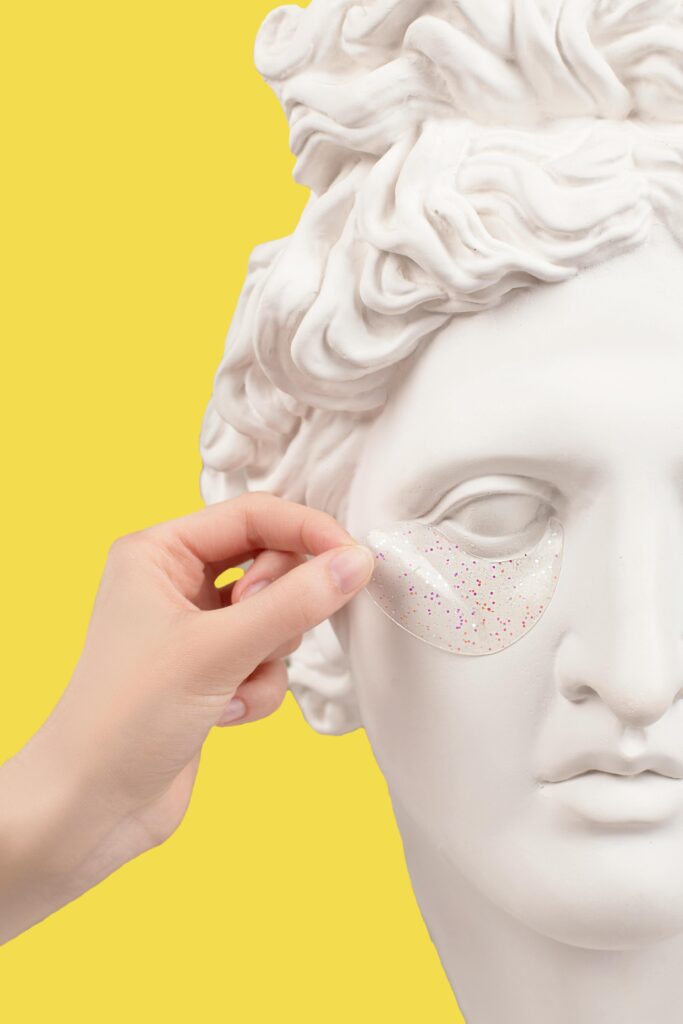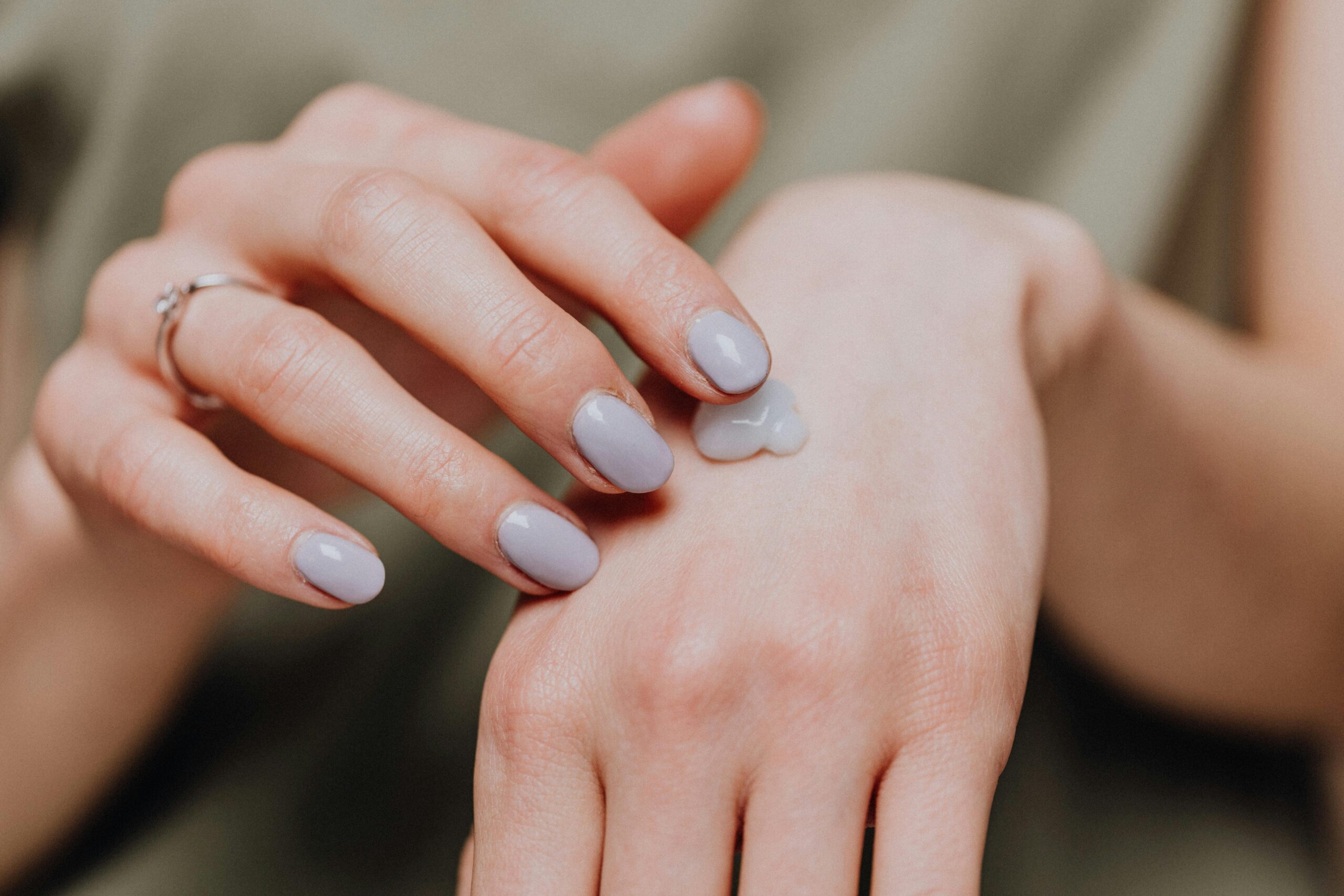Is Dry Skin Just a Lack of Moisture—or Is It a Cellular Response?
Most people think of dry skin as a surface issue—easily solved with a richer moisturizer or by drinking more water. But in reality, skin dryness is not just about moisture loss. It’s a complex biological response driven by molecular cues that go well beyond the surface.
Your skin doesn’t simply lose water. It detects that loss and responds with a cascade of signals. The outermost layer, the stratum corneum, behaves like a biosensor. When conditions change—like exposure to low humidity or excessive cleansing—your skin doesn’t stay silent. It activates backup systems. These include corneocyte (skin cell) behavior changes, barrier protein change, and shifts in enzyme activity.
Based on peer-reviewed studies from Egawa et al. (2002), Voegeli (2008), Rawlings & Harding (2004), Verdier-Sévrain (2007), and Harry’s Cosmeticology, this blog post uncovers how dryness is “felt” and managed by your skin on a cellular level. This is science-backed insight for those who want more than superficial fixes.
- Is Dry Skin Just a Lack of Moisture—or Is It a Cellular Response?
- Corneocytes—The Skin’s First Responders to Dryness
- How Skin Reads Humidity—TEWL, Osmotic Stress, and Internal Signaling
- Enzymes and Desquamation—Why Dry Skin Flakes
- Filaggrin and NMF — When the Skin’s Natural Moisture Sensors Malfunction
- What Tightness Feels Like — Mechanical Stress as a Biological Signal
- Breaking the Cycle with Formulation Strategy
- Your Skin Isn't Silent—It Sends Signals

Your skin doesn’t simply lose water.
It detects that loss and responds with a cascade of signals. The outermost layer, the stratum corneum, behaves like a biosensor. When conditions change—like exposure to low humidity or excessive cleansing—your skin activates backup systems. These include corneocyte (skin cell) behavior changes, barrier protein change, and shifts in enzyme activity.
Corneocytes—The Skin’s First Responders to Dryness
Corneocytes are often dismissed as “dead skin cells,” but they’re far from inert. These protein-rich, enucleated cells form the upper layer of your epidermis, and their role is foundational to how your skin senses and reacts to dryness.
What Happens to Corneocytes in Low Humidity?
In a landmark study, Egawa et al. (2002) examined human skin exposed to low-humidity environments (10% RH) for three hours. The results were striking:
- Corneocyte volume decreased by up to 25%, indicating severe water loss
- The skin’s surface became visibly rougher
- Cohesion between corneocytes diminished, making the skin more prone to shedding and flaking

Skin feels tight when it’s dry because the corneocytes—those outermost skin cells—begin to shrink as they lose water. This creates mechanical tension within the skin’s surface, disrupting its structure just enough for you to feel it.
That tight sensation isn’t a sign your skin is clean or firm—it’s your skin signaling that it’s underhydrated and struggling to maintain balance.
The Role of Corneodesmosomes
Corneocytes are connected by corneodesmosomes, protein complexes that degrade slowly to enable smooth desquamation. Under optimal hydration, this process is silent and continuous. But when corneocytes shrink:
- Corneodesmosomal breakdown is disrupted
- The upper layers become flaky and uneven
- Enzymatic shedding becomes irregular

Why does dry skin crack?
Think of corneocytes as tiles on a roof. In hydrated conditions, they overlap smoothly. When they shrink from dryness, gaps and cracks form, disrupting the entire surface.
Table: Corneocyte Response by Humidity Level
| Relative Humidity | Corneocyte Volume | Surface Texture | Flaking Risk |
| 50% (ideal) | Normal | Smooth | Low |
| 30% | Slightly reduced | Mildly uneven | Moderate |
| 10% (low) | Significantly reduced | Visibly rough | High |

This is why your skin feels tight or looks dull in winter or during flights – low humidity stresses the skin surface.
How Skin Reads Humidity—TEWL, Osmotic Stress, and Internal Signaling
Dry air doesn’t just pull moisture from your skin. It triggers internal responses designed to correct the imbalance—but those responses can become dysfunctional in persistently dry conditions.
TEWL: The Skin’s Moisture Alarm
Transepidermal Water Loss (TEWL) is the passive diffusion of water from the dermis to the environment. It’s always happening, but under dry conditions it can increase significantly.
Voegeli (2008) found that:
- Simple exposure to water without follow-up moisturization increases TEWL
- Towel-drying can elevate TEWL for up to 90 minutes post-wash
- Low humidity environments prolong this effect, delaying skin’s recovery
But more importantly, TEWL isn’t just loss—it’s a biological signal:
- It triggers increased lipid synthesis (especially ceramides)
- It influences gene expression, including proteins involved in barrier formation like filaggrin and involucrin

Your skin doesn’t “leak” water passively. It uses TEWL as a way to detect imbalance and attempt repair—until that system is overwhelmed.
Osmotic Stress: When Water Loss Becomes a Cellular Signal
Osmotic gradients—caused by uneven water distribution—trigger intracellular stress signals. In dry environments:
- Water moves rapidly from inside skin cells to the drier surface
- This causes osmotic imbalance, altering membrane tension
- Key proteins like aquaporin-3 (AQP3) reduce expression, which slows water transport and further traps dryness below the skin’s surface
This means that skin’s ability to hydrate itself internally becomes compromised—especially in cold, dry, or high-altitude environments.
TEWL vs. Osmotic Stress: What’s the Difference?
While TEWL is a measurement of how much water evaporates, osmotic stress is about how skin cells respond to that change internally. Together, they form a powerful feedback loop:
- Water evaporates rapidly → TEWL increases
- Skin cells lose water → osmotic stress triggers gene-level changes
- Barrier recovery genes activate—but need hydration to complete the repair
Fun Fact: Aquaporin-3 is essential for transporting both water and glycerol—without it, skin not only dries out but becomes less elastic.
Enzymes and Desquamation—Why Dry Skin Flakes
The outer skin doesn’t just fall off randomly—it’s shed in a tightly regulated process called desquamation, which depends heavily on hydration.
The Enzyme Connection
Several enzymes are responsible for corneocyte shedding:
- Kallikreins (KLK5 and KLK7)
- Cathepsins
- Transglutaminases
These enzymes require a hydrated, slightly acidic environment (pH ~5.5) to function properly. When hydration drops:
- Enzyme activity slows or halts
- Corneodesmosomes are not broken down efficiently
- Corneocytes pile up on the surface, resulting in visible flaking and scaliness
Rawlings & Harding (2004) emphasized that this mechanism is central to understanding xerosis (dry skin): it’s not just a loss of lipids or water, but a failure of natural exfoliation.
Overcompensation: Why More Flaking Doesn’t Always Mean Faster Turnover
In an attempt to repair the disrupted barrier, skin may accelerate corneocyte production. But without functioning enzymes:
- Skin turns over more rapidly
- Yet fails to shed properly
- Result: a thinner, flaky surface with higher TEWL

Skin Flaking: Imagine a factory producing more boxes, but the conveyor belt is broken. The products pile up, creating bottlenecks rather than solving the supply issue.
Table: Hydration vs. Enzyme Performance
| Hydration Level | Enzyme Activity | Skin Shedding Outcome | TEWL Status |
| Optimal | High | Smooth, invisible desquamation | Controlled |
| Moderate | Decreased | Uneven shedding, dullness | Slightly elevated |
| Low | Inhibited | Flaking, scaling, visible buildup | High |
Key Takeaway: Dryness isn’t just about what leaves the skin—it’s about what the skin fails to do because of that loss, particularly at the enzymatic level.
Filaggrin and NMF — When the Skin’s Natural Moisture Sensors Malfunction
Filaggrin isn’t just a structural protein; it’s the backbone of your skin’s self-hydrating mechanism. When the skin experiences dryness, the enzymes that convert filaggrin into water-binding molecules begin to falter. This compromises the production of natural moisturizing factor (NMF), your skin’s own internal humectant system.
The Filaggrin-to-NMF Pathway
Under healthy conditions, filaggrin degrades into:
- Free amino acids
- Urocanic acid
- Pyrrolidone carboxylic acid (PCA)
- Lactic acid and urea
These molecules are hygroscopic—they draw in and retain water, keeping the stratum corneum pliable. But this conversion depends on enzyme systems that require hydration to work. According to Rawlings (2004) and Verdier-Sévrain (2007):
- NMF levels drop sharply in dry environments
- The necessary enzymes slow down or shut off without water
- This creates a self-perpetuating cycle of dehydration
Eczema and Age-Related Decline
Skin with a genetic predisposition to atopic dermatitis often lacks sufficient filaggrin production. Similarly, aging skin naturally sees a decline in filaggrin synthesis, which correlates with increased dryness and barrier fragility.
Result:
- Less NMF means less internal hydration
- Reduced hydration leads to higher TEWL
- Higher TEWL causes further barrier stress and dysfunction
Table: How NMF Levels Affect Skin Function
| Skin Type | NMF Availability | TEWL Rate | Barrier Integrity |
| Normal, healthy | High | Low | Strong and responsive |
| Aged or dehydrated | Moderate | Moderate to High | Weakened |
| Eczema-prone | Low | High | Compromised and reactive |

Without replenishing NMF-mimicking ingredients (like urea or sodium PCA), even a heavy moisturizer may fail to deliver lasting hydration.
What Tightness Feels Like — Mechanical Stress as a Biological Signal
Tightness is one of the most misunderstood skin sensations. It’s often mistaken for a sign of cleanliness or firming, but in reality, it’s a physiological stress signal from your skin barrier.
What Is Tightness, Biologically Speaking?
When corneocytes shrink due to water loss, they create internal tension in the stratum corneum. This tension is registered by mechanoreceptors—sensory neurons embedded in the epidermis. The result is a pulling or tightening sensation.

Tightness is your skin’s way of signaling insufficient hydration—not proof of a product working.
Early Signs of Barrier Stress
Tightness may occur even when skin looks normal:
- No flaking or redness
- Surface may appear balanced
- But underlying hydration is compromised
This makes it particularly tricky to diagnose without paying attention to subjective feedback. People with oily skin often ignore tightness because they assume their skin is well-hydrated. But oil and water aren’t interchangeable.
Tightness is often the first symptom of barrier dysfunction, even before flaking or visible dryness sets in.
Breaking the Cycle with Formulation Strategy
To effectively manage dry skin, your skincare routine needs to do more than soften the surface. It must address hydration deficits, enzyme function, and barrier repair simultaneously.
Step 1: Hydrate Internally
- Use humectants that replicate NMF activity: glycerin, urea, sodium PCA, lactic acid
- Apply them on slightly damp skin to leverage existing water
These ingredients not only draw moisture into the skin, but also support enzymes that process filaggrin and maintain desquamation.
Step 2: Rebuild the Lipid Barrier
- Use moisturizers with ceramides, cholesterol, and fatty acids in a 3:1:1 ratio
- Incorporate oils high in linoleic acid, such as:
- Evening primrose oil
- Rosehip seed oil
- Grapeseed oil
- Sunflower seed oil
- Safflower oil
- Evening primrose oil
Linoleic acid helps reinforce lipid bilayers in the stratum corneum, improving water retention and preventing TEWL.
Step 3: Seal the Surface with Occlusives
- In very dry climates or post-cleansing, sealing hydration in is critical
- Choose non-comedogenic occlusives like squalane
These reduce water evaporation but must be layered after humectants and emollients for maximum effect.
Step 4: Support Enzyme and pH Balance
- Urea, in addition to being a humectant, reactivates enzyme systems involved in healthy shedding
- Keep formulations around pH 5.5 to optimize enzymatic function and preserve the skin’s acid mantle
The ideal product isn’t one that just “feels good”—it’s one that targets molecular dysfunction with intentional ingredients.
Table: Dry Skin Solutions Based on Root Cause
| Symptom | Biological Cause | Corrective Ingredients |
| Flaking | Inactive desquamation enzymes | Urea, gentle exfoliants, pH 5.5 products |
| Tightness | Corneocyte shrinkage | Glycerin, sodium PCA, squalane |
| Persistent dryness | NMF deficiency | Lactic acid, amino acids, urea |
Your Skin Isn’t Silent—It Sends Signals
Every flake, every tug of tightness, is your skin communicating its needs. Understanding these sensations at the molecular level reframes dry skin as a biological response—not a cosmetic inconvenience.
- Corneocytes shrink and lose cohesion
- Enzymes slow, impairing exfoliation
- Filaggrin fails to convert, reducing NMF
- TEWL rises, and the barrier breaks down
By supporting skin with the right hydration, lipid structure, and enzymatic conditions, we’re not just treating symptoms—we’re resolving root causes.
Have you experienced skin that feels tight but doesn’t look dry? You’re not alone. Share your story @DrBeautiology.
Let’s move beyond marketing—and back to biology.
Talk to you soon!
Dr Bozica

